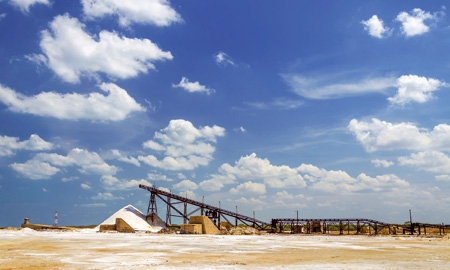In recent years, Colombia has expertly harnessed its resources in such a way that its oil, gas and mining industries have seen a rise in production, exports and investment.
According to Colombian Central Bank estimates, the country received a record US$16.8 billion in foreign direct investment in 2013, of which the hydrocarbons and mining sector received the lion’s share: US$13.7 billion in total.
The country has always been known for its mineral endowment, but now more than ever it is leveraging the entire breadth of its bounties of nature. New infrastructure, the discovery of hitherto unknown oil reserves, growing export destinations and favorable regulations are paving the way to prosperity.
As of the first of January 2014, Colombia was Latin America’s fourth-leading oil producer, with proven crude oil reserves amounting to 2.4 billion barrels. It is in an elite group of just 22 countries in the world with an output of 1 million barrels per day (bpd), and production is expected to reach 1.3 million bpd by 2020. With consumption of less than 300,000 bpd in 2012, that leaves the bulk available for export.
Going forward, the idea is full steam ahead. According to Alejandro Martínez Villegas, President of the Colombian Association of Petroleum (ACP), the government’s objective is to increase daily output, with “a high quantity in investment and exploratory activity in search of growth”.
Expanded oil production will require discoveries of reserves and improvements to infrastructure safety, and fortunately there are parts of the country that are largely untapped and certified reserves continue to be discovered.
Says former Minister of Mines and Energy Federico Rengifo: “We want our reserves to grow. The challenge is achieving the conditions in Colombia which are favorable for both the country and for enterprise to increase output in a socially responsible way”.
Leading export destinations for Colombia’s oil include the U.S., Panama, China and Spain. In 2012, it exported 432,000 bpd of crude oil and refined products to the U.S., a steady increase over the last six years, according to Germán Arce Martínez, former President of the National Hydrocarbons Agency, “whereas Mexican and Venezuela oil exports there have both declined”.
China is also looking to get involved, primarily by financing investment projects to transport Colombian oil to the Pacific coast.
| There are parts of the country that are largely untapped and certified reserves of oil continue to be discovered |
Natural gas is also one of Colombia’s fortes. With current reserves of 5.7 trillion cubic feet, Colombia’s Ministry of Mines and Energy maintains that it has enough natural gas to meet its own needs for the next 14-15 years. In 2011 alone, the country produced 387 billion cubic feet (bcf) of dry natural gas and consumed 312 bcf, while slightly more than half of total gross natural gas production was reinjected to aid in enhanced oil recovery.
Production originally started to outstrip consumption back in 2007, and by March 2011, the government published a decree outlining a plan to increase natural gas output with a view to boosting exports. The country recently began exporting to Venezuela, and has seen an increase in new export opportunities.
Most of Colombia’s reserves are in the Llanos and Guajira Basins in the east and, like oil, production has climbed notably in recent years due to growing investment in exploration and development. Additional growth is currently a government priority.
According to Mining and Energy Minister Amylkar Acosta, mining investment in Colombia has increased by 17% since 2012, outpacing Latin America as a whole.
Coal is a leading resource, and output has risen steadily over the years. Total production in 2012 amounted to 98.1 million short tons (MMst), and consumption totaled just 5.1 MMst, leaving the remainder for export. This mineral plays a vital role in the economy and is the country’s second main export after oil. Primary destinations in 2012 included Europe, the rest of Latin America, as well as the United States, with Asia recently joining that list, led by China.
Says Santiago Angel Urdinola, Vice-President of Mining, Oil and Energy of ANDI (the National Business Association), “Colombia is one of the world’s top producers in mining and hydrocarbons. We must continue to increase our strength in non-renewable natural resources, and that’s only possible through clear government and forward-looking regulations.”
Colombia’s robust position in these industries has been enhanced by a battery of regulatory reforms, further boosting the appeal of its natural gas and oil sector vis-à-vis foreign investors and driving the increase in production. Says Camilo Marulanda, President of Cenit (a subsidiary of Ecopetrol): “The mining-energy sector is one of Colombia’s foremost economic drivers. It has expanded notably in the last four years, and now we must figure out how to maintain that growth going forward.”
Colombian enterprise agrees that growth must be maintained in a sustainable way, and they are well aware of the important challenges they face. Nevertheless, they are focused on operating responsibly with consideration for the environment at all times.
“Colombia is one of the most demanding countries in terms of environmental awareness and responsibility. It is about more than complying with regulations; decision-making must be ethical. It is crucial to operate with foresight,” says Beatriz Uribe Restrepo, President of Mineros S.A.
Colombia has a long-standing tradition in mining and energy, both of which are ingrained in the communities. It has every interest in continuing to exploit its resources in a way that is responsible, while also providing the conditions which favor investment. María Constanza García Botero, President of the National Mining Agency, calls for “a three-pronged approach that aims to achieve a balance between economic development, environmental preservation and progress for society.”

0 COMMENTS